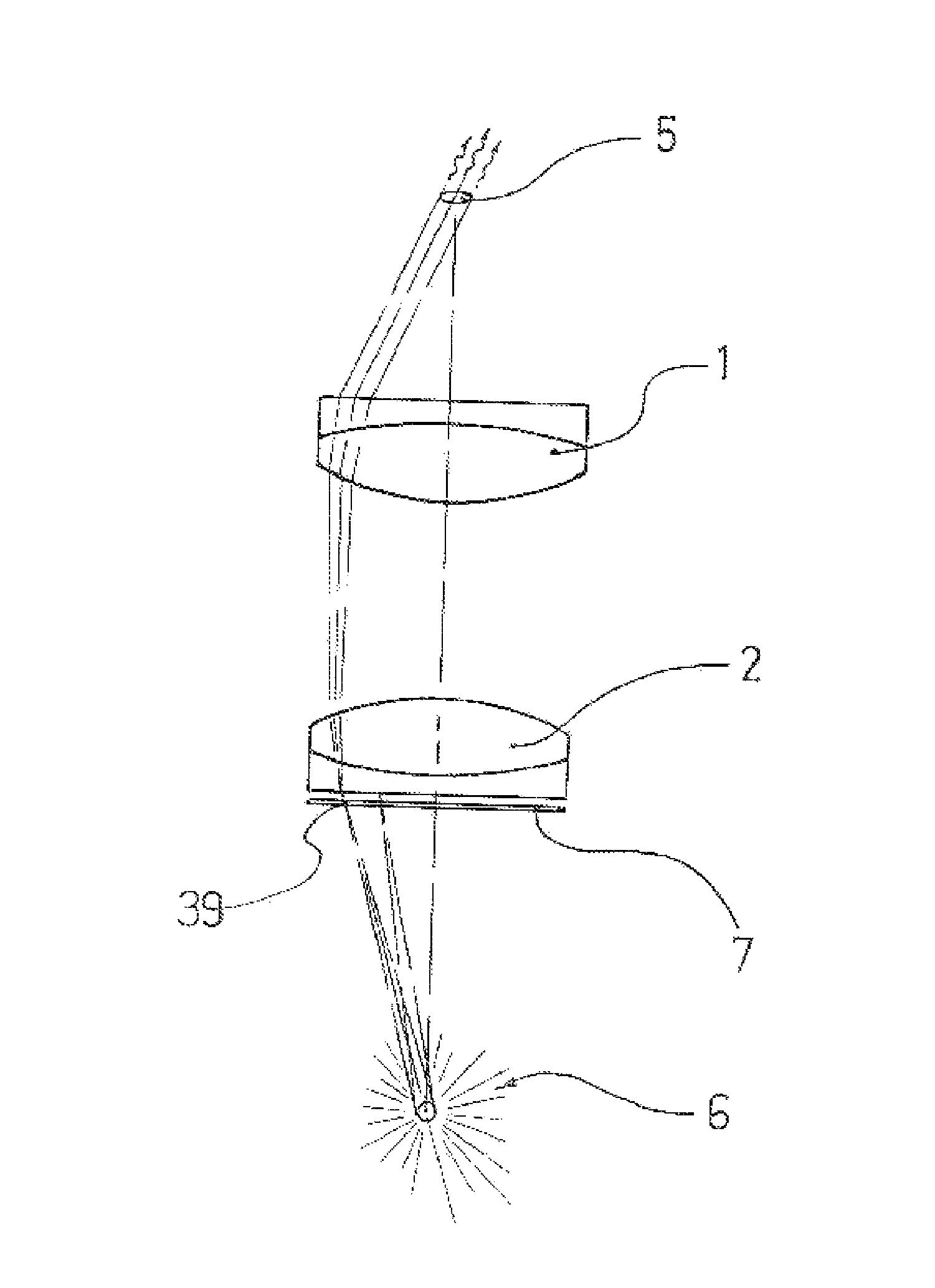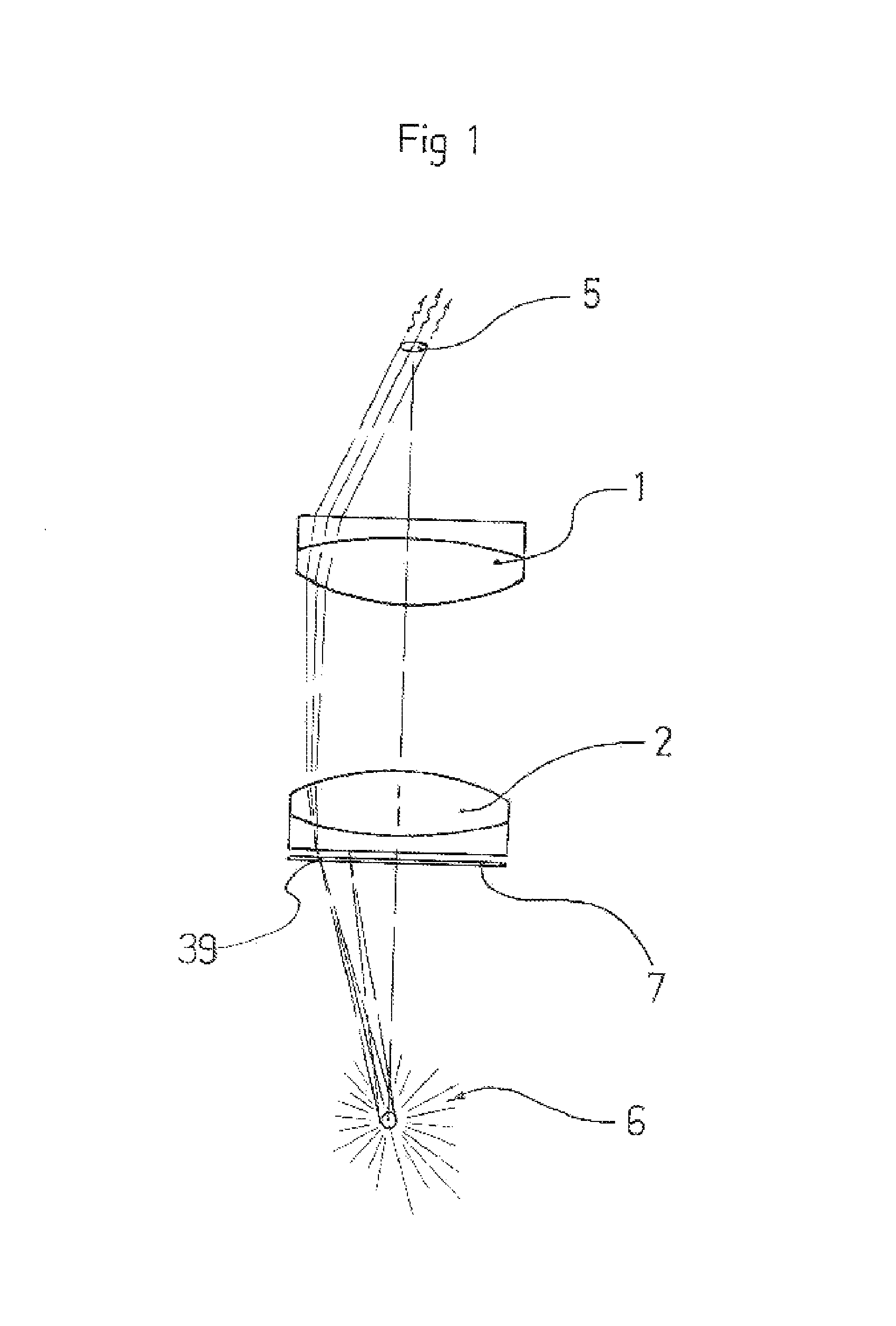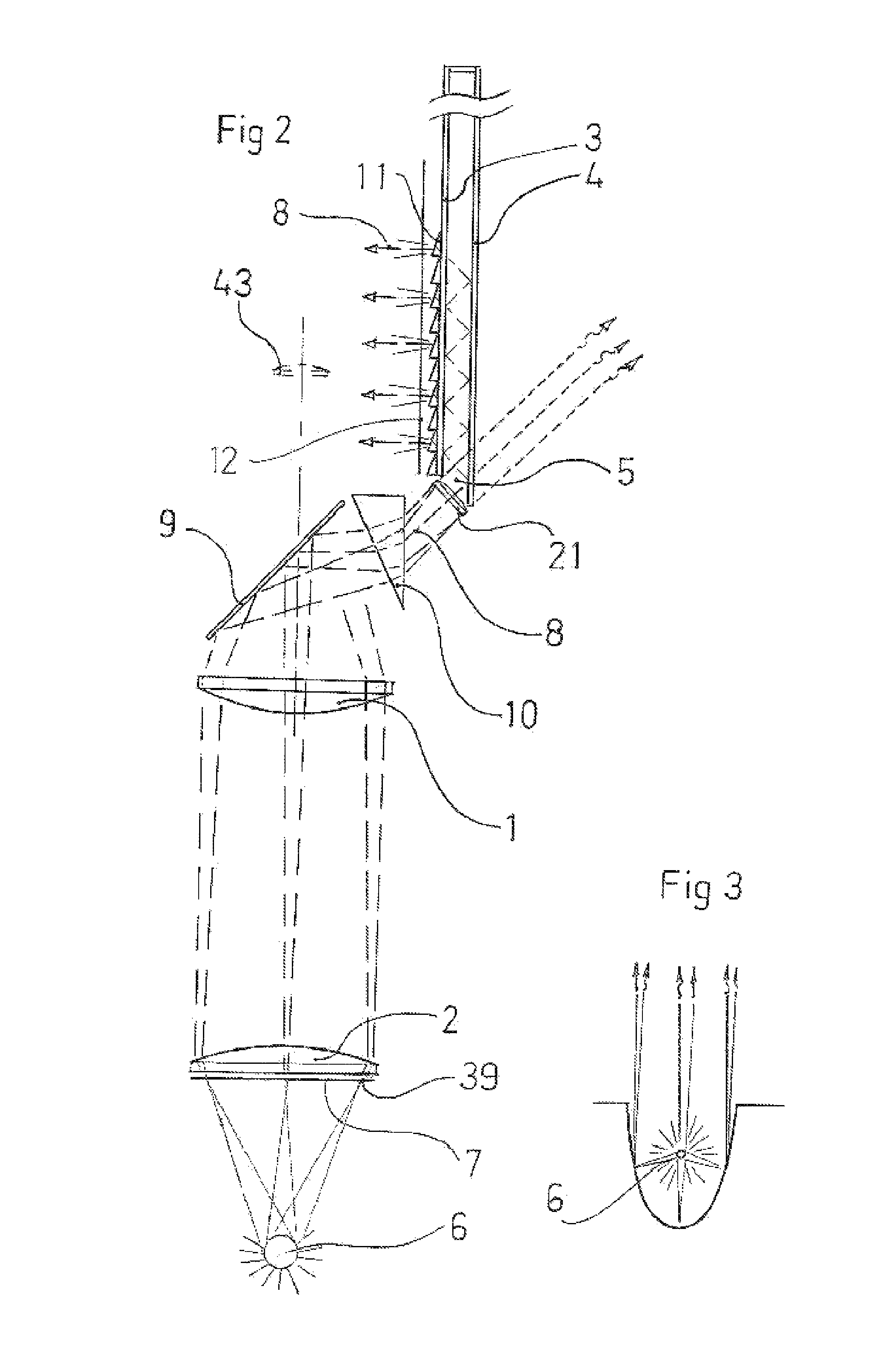Infinity display with autostereoscopic capability
a technology of autostereoscopic capability and display, applied in the field of infinity display, can solve the problems of restricting the full capability of this device, and achieve the effects of superior display, high quality, and compact structur
- Summary
- Abstract
- Description
- Claims
- Application Information
AI Technical Summary
Benefits of technology
Problems solved by technology
Method used
Image
Examples
Embodiment Construction
[0050]Referring now to the drawings, the present invention relies upon the convergence and collimation of modulated light as shown in FIGS. 1 and 2, and the subsequent reflection of said light between two reflective surfaces e.g. two closely spaced mirrors 3 and 4 at least one of which has a partially transmissive first surface 3 that acts as a display. Its autostereoscopic properties arise from a device within the optical path that in most embodiments is a lenticular array 13 that proffers slightly different views generated by an SLM 7 using a prior art method that is well known to those skilled in the subject. The manner in which the said prior art method is adapted and improved to suit the present invention is also discussed as shown for example, in FIG. 15. FIG. 1. shows the basics of how the light rays from the image as a whole are generally converged toward an aperture 5, whilst individual image points undergo collimation as required to produce an image at infinity focus. This...
PUM
 Login to View More
Login to View More Abstract
Description
Claims
Application Information
 Login to View More
Login to View More - R&D
- Intellectual Property
- Life Sciences
- Materials
- Tech Scout
- Unparalleled Data Quality
- Higher Quality Content
- 60% Fewer Hallucinations
Browse by: Latest US Patents, China's latest patents, Technical Efficacy Thesaurus, Application Domain, Technology Topic, Popular Technical Reports.
© 2025 PatSnap. All rights reserved.Legal|Privacy policy|Modern Slavery Act Transparency Statement|Sitemap|About US| Contact US: help@patsnap.com



